One article helps you know about USB PD fast charge development
With 5G arrival, the requirements for all aspects of the phone have become more stringent, specially for battery working life. Besides larger and larger capacity batteries, higher charging power has also become a prior solving problem.
1. USB BC1.2
Smartphone fast charging strictly began in 2010 when the USB IF promulgated the USB BC 1.2, which not only regulate the chaotic situation of USB charging specifications, but more importantly, to increase the charging current to 1.5A, the maximum power of the USB charging interface reached 7.5W, that’s ennough to meet the charging needs at the time.

Time passed with techology development, the battery capacity gradually increased, while the phone power consumption was also increasing, at this time USB BC 1.2 has not been able to meet the phone charging needs, but the USB IF was still not taking action, Qualcomm cannot wait any more.
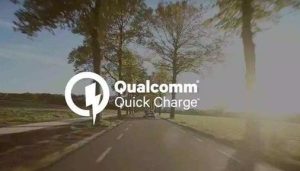
2. QC1.0
In 2013, Qualcomm broke the 1.5A limit of USB BC 1.2 and increased the charging current to 2A, reaching a maximum of 10W charging power. This was the original QC 1.0, announcing the arrival of Qualcomm’s fast charging protocol. With the advantages in chips and communications, Qualcomm QC fast charging protocol quickly spread and grow in Android phones.
Since then, cell phone fast charging development has entered a fast track, but also into a period of chaos. Qualcomm QC, MediaTek PE and phones’ manufacturers also own fast charging such as OPPO VOOC, Apple, Samsung AFC, Huawei FCP/SCP and so on.
However, charging the phone is not just only related to chargers, but also cables. 2014 when Qualcomm wanted to continue to increase the charging current according to the QC1.0 direction, found that it didn’t work.

3. QC2.0
At that time, although Type-C cable has been released but not widely used, we used Micro USB 2.0 data cable, its internal structure leads to the limited of getting bigger current, 2A is the max. So, Qualcomm changed to boost the voltage to increase the charging power, that is QC2.0. xiaomi 3/4 are using the QC2.0 protocol.
Qualcomm QC2.0 boosts the charging voltage directly from 5V to 9V/12V/20V, while the 20V voltage is mainly for notebooks. So when the current is 2A, the charging power reaches 18W, while at the 12V voltage, the current is only 1.5A, reducing the current effectively.
The advantage of QC2.0 is no special requirement for charging cable, and the cost is small, but the disadvantage is the getting heat when charging as well as low efficiency.
And at this point, OPPO was going the opposite way to Qualcomm, that is, low voltage high current.
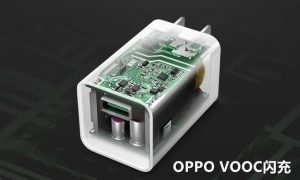
Since the traditional cable can not withstand such a high current, so OPPO directly changed the portable charger & the data cable together. They increased MicroUSB contacts from 5 to 7, and the charger integrated with IC circuitry and so on. That protected their phones from charger to cable.
Such a large and deep transformation lead the first generation of VOOC quick charging directly to 5V5A/25W, the AD “charging 5 minutes, talk 2 hours”, made OPPO VOOC quick charging world famous .
The advantage is that heat is low when charging the phone, with high charging efficiency and fast; the disadvantage is undoubtedly: the high cost, and only support OPPO’s own products, poor compatibility.
4. QC3.0

In 2015, Qualcomm released QC3.0, mainly added the INOV optimal voltage intelligent negotiation algorithm, making 200mV as a setting voltage, the lowest can be down to 3.6V. the max 20V, providing a flexible choice from 3.6V to 20V, and downward compatible with QC2.0.
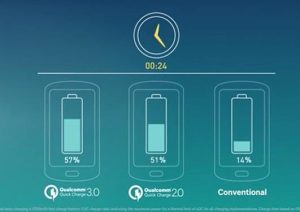
And with the popularity of the Type-C interface at this time, the maximum charging current also increased to 3A. Therefore QC3.0 can make cell phones and other portable devices to get the suitable voltage, achieving the expected current to minimize power loss, increase charging efficiency and improve thermal performance. Qualcomm providing data shown the efficiency improvement of up to 38%, charging speed increased by 27%, heat reduced by 45%.
5. QC4.0
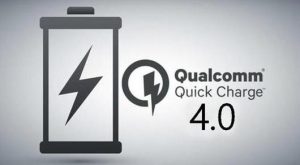
In 2016, Qualcomm released QC4.0, the power increased to 28W, and a more refined INOC algorithm, the amplitude adjusted from 200mV to 20mV, eliminated the 12V voltage gear, 5V can have 5.6A maximum current, 9V with 3A maximun, especially important is that, began to support USB PD (2.0) protocol. But not compatible with QC3.0 and QC2.0.
So what’s the output for QC quick charging:
1) QC1.0: 5V 2A
2) QC2.0: From 5V to 9V/12V/20V, 3A max
3) QC3.0: 3.6V~20V, 3A max, 200mV as a grade
4) QC4.0: 5V~9V, 3A~5.6A, 20mV as a grade

It should be mentioned here that although the market has been flooded with a variety of fast charging protocols such as Qualcomm QC, MediaTek PE, OPPO VOOC and Huawei, Samsung and other home-grown protocols, and Type-C interface has become popular, these protocols are not compatible with each other, so USB IF came out again.
6. USB PD3.0
USB IF released the USB Power Delivery (USB PD) charging standard based on USB 3.1
(USB 3.1 ≠ USB PD 3.1, which defines the data transfer speed, and USB PD3.1, which is responsible for charging power and compatibility) in Type-C, which can support up to 100W (20V/5A) charging power, aiming to unify the charging standard of portable mobile devices, and all companies can be obedient to their own charging protocols into the USB PD protocol.
The USB IF is the industry leader, Google also said that Android must support USB PD, then in 2017, USB PD3.0 has done compatible with Qualcomm QC4.0/3.0, OPPO VOOC, Huawei FCP/SCP, etc., covering high voltage low current and low voltage high current, voltage output range of 3.0V-20V, voltage regulation range of 20mV, current gear of 1.5A, 2A, 3A, 5A, you can easily to check the USB PD output parameter:
1) USB BC1.2: 5V 1.5A
2) USB PD1.0: Not clearly
3) USB PD2.0: 5V 3A, 9V 3A, 15V 3A, 20V 2.25A, 20V 3A, 20V 5A
4) USB PD3.0: 5V 3A, 9V 3A, 15V 3A, 20V 2.25A, 20V 3A, 20V 5A
PPS: 3.3V-5.9V 3A, 3.3-11V 3A, 3.3-16V 3A, 3.3-21V 3A, 3.3-21V 5A
5) USB PD3.1: 5V 3A, 9V 3A, 15V 3A, 20V 3A, 20V 5A
PPS: 3.3V-5.9V 3A, 3.3-11V 3A, 3.3-16V 3A, 3.3-21V 3A, 3.3-21V 5A
ERP: 28V 5A, 36V 5A, 48V 5A
AVS: 15-28V 5A, 15-36V 5A, 15-48V 5A

In 2017 Qualcomm released QC4.0+ with improved dual power management ICs, intelligent thermal balancing, advanced security features and more. Also, compatible with USB PD 3.0 (PPS) protocol as well as backward compatibility with PD2.0, QC3.0, QC2.0, etc.

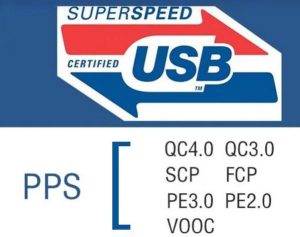
USB PD3.0 has gained considerable “momentum” under the collective push of the giant Apple Inc. The iPhone is now compatible with USB PD3.0 fast charging, and other brands of fast charging are more or less related to USB PD3.0.

7. All devices can be PD fast charging ?
After taking a firm foothold from cell phones, tablets and laptops, PD fast charging is gradually moving to the markets such as displays, new energy vehicles, power tools and IoT devices.

PD3.0 up to 100W power supply capacity has also been achieved. Now there are many 100W PD fast charging chargers, most of them are GaN, consumers can choose according to their needs and preferences.

Although the universal 100W is good, the cell phone manufacturers are not satisfied with it, they broke 100W under a variety of private agreements. Private agreement is ultimately just a private agreement, compatiblity limit their widely usage.
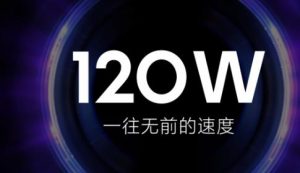
But USB-IF is also helplessness, due to the limitations of the terminal and cable, USB-C transmission current is limited to 5A, USB PD3.0 voltage of 20V, 100W is already the maximum.
As a super protocol that aspires to “unify the world”, USB PD3.1 of course cannot ignore the needs of the public. With this update, USB PD3.1 increases the power to 240W by extending the voltage to 48V and the current to 5A.
It seems that everything can be fast charging now ?
With USB PD3.1, technically speaking, it only adds three new voltage levels of 28V, 36V, and 48V, corresponding to the application of 6 batteries, 8 batteries, and 10 batteries.
But looking at the range of smart devices, this PD fast charging standard expands numerous new application areas, including computers, servers, motor drives and communication power supplies.
Take the power tool market as a simple example.
The popularity of power tools with built-in batteries is growing, the shipments reaching 490 million units in 2020 alone, and most power tools are powered by lithium batteries. The USB PD3.1 standard will drive the iteration of power tools from traditional linear charging to USB PD fast charging, and simplify charging circuit design, reduce overall costs and improve the fast charging experience.
In addition, the USB PD 3.1 standard can also be applied to security field POE power supply, two-wheeled electric vehicles, IOT IoT devices and other fields to optimize device costs.
It can be said that USB PD 3.1 opens the door to the era of fast charging for everything!
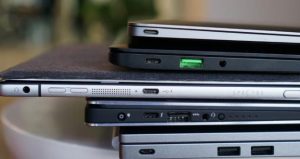
Before the era of complete wireless, the interface is essential. As shown above, the USB interface, Type-C is becoming mainstream, but in countless devices, there are still many different interfaces, which require different cables to match the use. Even if it is a problem of historical development, each industry has its own “rules of the road”, but not a common cable is essentially a waste, and a great waste.
The ambition of USB PD3.1 is to expand the application of USB PD from the traditional cell phone and laptop power to a wider range of areas, making USB PD a truly unified power supply standard.
Because USB PD is a universal standard with a strong foundation, there are already many products that are actively compatible with PD, and the overall scale is quite large. This inertia has allowed PD to grow along with new technologies, new processes and competitive applications.
By that time, both chargers, cables, and various devices are compatible with the PD protocol. A charger can charge a cell phone, can power a computer, can also be used on an electric screwdriver, and can even charge a small electric donkey.
On one hand, most of the devices use the same universal charging method, we do not have to change any more, or even go out with only one charger; on the other hand, consumers are familar with fast charging, the companies really do not need to match the charger, cable etc., we also don’t have to spend money on buying some extra parts, both sides save money and trouble.
With the development of this trend, manufacturing less, less electronic waste, the world will become a better place.
R & D investment is also diluted, and ultimately manufacturing costs reduce, the whole industry will become more and more mature, people not only have more choices, but also buy quality products at a good price.
In general, USB PD3.1 promotes the connection and charging more unified, fundamentally reduce the “consumption” of smart devices charger. I believe that USB PD3.1 can play an important role in promoting environment protection, reducing e-waste, and the interconnection of all things.
